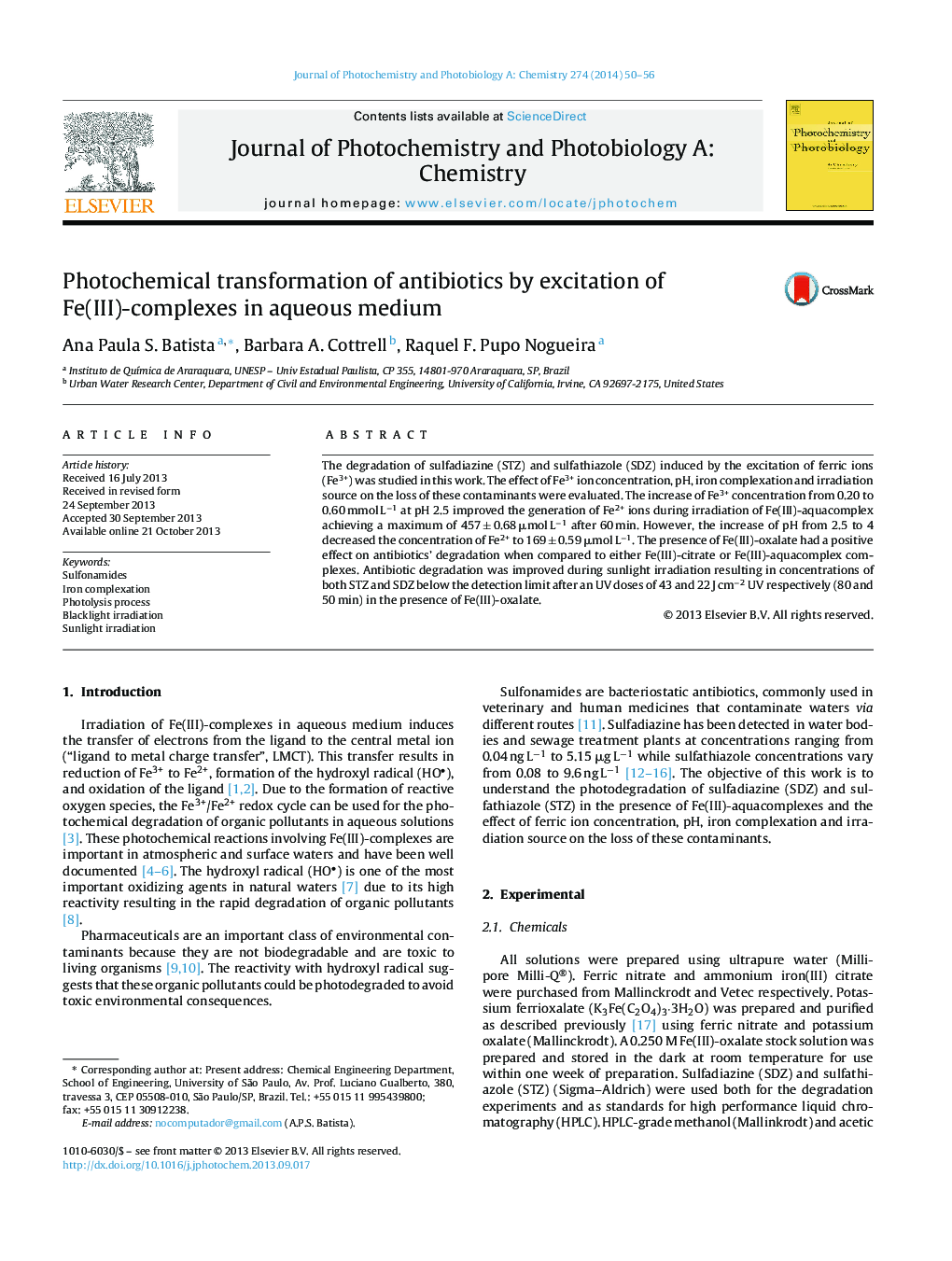| Article ID | Journal | Published Year | Pages | File Type |
|---|---|---|---|---|
| 26775 | Journal of Photochemistry and Photobiology A: Chemistry | 2014 | 7 Pages |
•Degradation of sulfadiazine and sulfathiazole induced by excitation of Fe3+ ions was evaluated.•The effect of ferric ion concentration, pH, iron complexation and irradiation source in photodegradation of antibiotics was demonstrated.•Possible competition of remaining citrate ligand carbon with target compound (or its degradation products) for either HO or other radical formed during Fe(III)-citrate photolysis.
The degradation of sulfadiazine (STZ) and sulfathiazole (SDZ) induced by the excitation of ferric ions (Fe3+) was studied in this work. The effect of Fe3+ ion concentration, pH, iron complexation and irradiation source on the loss of these contaminants were evaluated. The increase of Fe3+ concentration from 0.20 to 0.60 mmol L−1 at pH 2.5 improved the generation of Fe2+ ions during irradiation of Fe(III)-aquacomplex achieving a maximum of 457 ± 0.68 μmol L−1 after 60 min. However, the increase of pH from 2.5 to 4 decreased the concentration of Fe2+ to 169 ± 0.59 μmol L−1. The presence of Fe(III)-oxalate had a positive effect on antibiotics’ degradation when compared to either Fe(III)-citrate or Fe(III)-aquacomplex complexes. Antibiotic degradation was improved during sunlight irradiation resulting in concentrations of both STZ and SDZ below the detection limit after an UV doses of 43 and 22 J cm−2 UV respectively (80 and 50 min) in the presence of Fe(III)-oxalate.
Graphical abstractFigure optionsDownload full-size imageDownload as PowerPoint slide
